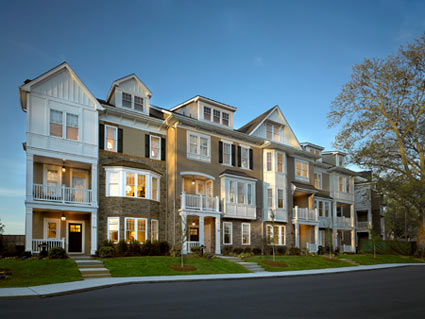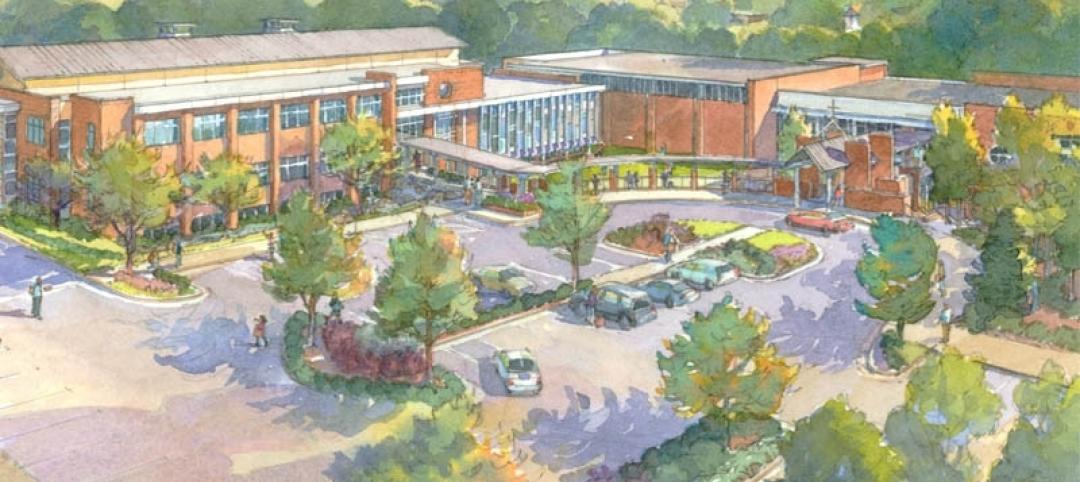Health systems and hospitals acquiring or developing real estate is not new. For years, healthcare providers have been repositioning their portfolio in an effort to minimize cost and reduce risk, particularly in the wake of the Affordable Care Act. The difference in today’s trends is not the size or use of the real estate, but where it is located and the theory behind it’s placement.
NEW TRENDS
In urban and even suburban markets, real estate today is about the "live, work, play" notion. Within residential projects, close proximity to mass transit and other amenities, like groceries or retail stores, makes for a successful development.
According to The Center for Transit Oriented Development, the number of households looking to rent or buy housing within a half mile of fixed-guideway transit stops is expected to reach 14.6M by 2025. Ancillary development of retail and services to support this population will continue to follow.
Healthcare organizations are also evaluating these developments in order to identify a market response, especially in heavily populated urban areas.
Placed next to restaurants and apartment complexes with proximity to public transportation and other quick mart stores such as CVS and Walgreens, healthcare organizations can provide convenient care to the neighborhood in ways the community had not been previously served. The products being put in place within this environment can range from prompt care clinics to larger ambulatory care facilities.
Some recent market examples feature ambulatory care center developments which include services like primary and preventative care, radiology, rehabilitation services, urgent care, and specialists in cardiology, orthopaedics, sports medicine, and women’s health. These centers are increasingly being placed above a walk-up anchor tenant such as a retail pharmacy or other health related retail operation. Together they create a destination that becomes the preferred one-stop shop for healthcare in the community.
This retail and mixed-use model can position a healthcare organization to capture large portions of an area’s growing population, providing a new market for care delivery. Essentially, with this type of development, healthcare has transitioned into another mixed-use retail shop.
Another example of the "live, work, play" strategy is the development of residential townhomes and apartments within close proximity of healthcare campuses. The award-winning Whitehall Community in Bryn Mawr, Pa., fits this product description. The development was the result of a partnership with Main Line Health and created a "village" within walking distance to not only the hospital’s clinical services, but the town’s shops and restaurants. Different than other national developers’ recent projects, the target for these townhomes wasn’t Millennials. Instead, Main Line Health created four-story, luxury homes that feature an elevator option for the community’s aging Baby Boomers wanting an urban feel but convenient access to healthcare.
FINDING THE OPPORTUNITY
Establishing a presence in urban areas, be it through new development or occupying vacant retail space, allows for multiple competitive advantages for regional, super regional and national systems. First, systems are able to capture a market otherwise taken by their competitors, increasing visibility and volumes. With costly emergency room visits, the new patients seek quick, convenient, and competent care at a lower cost than what a traditional ER delivers.
Second, occupying vacant space on Main Street, or in a busy neighborhood, provides the system with speed-to-market and the ability to capture that market share quicker and at a less costly rate. Systems may opt to buy the storefront, or rent, both in less time than new construction would take.
Historically, the retail and banking industries have utilized advanced predictive analytic techniques incorporating market demographic and psychographic datasets for guidance in planning their retail and customer oriented store and branch networks. By combining these proven techniques with rigorous healthcare and patient center datasets and real-time local market intelligence, healthcare organizations can identify optimal opportunities for growth of the business. Utilizing portfolio analytics tools provides the rationalization for service locations as well as predicts the financial impact and overall feasibility of investment decisions.
Healthcare organizations traditionally have not chosen to push the envelope when it comes to real estate development, but the business of healthcare today requires a different approach. In order to identify opportunities and develop an appropriate deal structure, healthcare organizations must have the appropriate tools and expertise to balance the risk. This is being accomplished by a combination of adding expertise in-house and partnering with outside real estate professionals.
CONCLUSION
Health systems desire the cost savings of preventative care and creating more healthy communities. By concentrating efforts at the core of neighborhoods in more urban and populated areas, systems can serve exponentially higher numbers of patients. Branding is a crucial element of this urban-centric outpatient strategy. Without maintaining consistency with the other hospitals, medical office buildings, and even the other outpatient centers, the perception of the system’s presence is lost - visibility is key.
Those hospitals, systems and health care providers taking a proactive, creative approach to real estate acquisition and development will continue to advance the industry in light of reform. We continue to look to these innovators for the pulse of today’s healthcare.
About the Authors
Eric Fisher is Managing Director with Trammell Crow Company. Patrick Duke is Managing Director with CBRE Healthcare.
Related Stories
| Oct 19, 2011
THOUGHT LEADER: Samuel S. Unger, RA, MCR, SLCR, MBA, is the Americas Real Estate Leader for Ernst & Young, LLP
Samuel S. Unger, RA, MCR, SLCR, MBA, is the Americas Real Estate Leader for Ernst & Young, LLP, Atlanta. He also serves as president of the CoreNet Global Atlanta chapter. In addition to managing 6.8 million square feet of real estate in North and South America, his responsibilities include real estate strategy for area practices, management of external professional alliances, requirements definition, business case development and approval, real estate negotiation and lease development, and oversight of construction projects for the portfolio. He holds a bachelor’s degree from Harvard College, an MLA and MArch from the University of Pennsylvania, and an MBA from Temple University.
| Oct 19, 2011
Another drop for Architecture Billings Index
Positive conditions seen last month were more of an aberration.
| Oct 19, 2011
System for installing grease duct enclosures achieves UL listing
Updated installation results in 33% space savings.
| Oct 18, 2011
Michel Bruneau wins 2012 AISC T.R. Higgins Award
The AISC T.R. Higgins Lectureship Award is presented annually by the American Institute of Steel Construction (AISC) and recognizes an outstanding lecturer and author whose technical paper(s) are considered an outstanding contribution to the engineering literature on fabricated structural steel.
| Oct 18, 2011
Dow Building Solutions invests in two research facilities to deliver data to building and construction industry
State-of-the-art monitoring system allows researchers to collect, analyze and process the performance of wall systems.
| Oct 18, 2011
Architectural leaders join Gehry to form strategic alliance
Alliance dedicated to transforming the building industry through technology.
| Oct 18, 2011
St. Martin’s Episcopal School expands facilities
Evergreen commences construction on environmentally sustainable campus expansion.
| Oct 17, 2011
THOUGHT LEADER: Allan Bilka, Senior Staff Architect and Secretariat to the IGCC
Allan Bilka, RA, is a Senior Staff Architect and Secretariat to the International Green Construction Code (IgCC) with the International Code Council, based in the ICC’s Chicago district office. He also serves as staff liaison to the ICC-700 National Green Building Standard. He has written several ICC white papers on green building and numerous green-related articles for the ICC. A registered architect, Bilka has over 30 years of combined residential design/build and commercial consulting engineering experience.
















